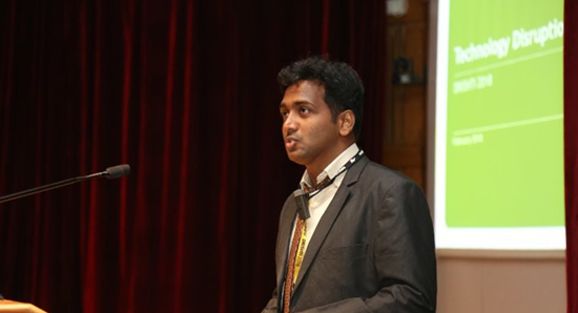Building Adaptive IT Services Organisations in India

Interesting how trendy managerial abbreviations make their way into everyday vocabulary. I am fascinated with a recent entry – VUCA, which stands for volatility, uncertainty, complexity, and ambiguity. In the context of global businesses, it represents the impact of various forces on the current business environment. While there are many forces such as geopolitical uncertainty and changing customer preferences, the most important force with respect to IT services is the constant innovations in technology.
The challenge is articulated very well by Mr Harish Manwani (Non-Executive Chairman, Hindustan Unilever Limited) who says “Long-term is very important, Short-term is even more important, at the same time, it is the death of medium-term” – he emphasizes the need for agility in the short-term while being rooted on the long-term goal. He also highlights the fact that it is very difficult and not very useful for organizations to have a medium-term plan in a VUCA world because of the rate of change in the operating environment. With the ever-increasing need for agility in the market, it would be good to understand the competitive advantage of Indian IT services industry using Porter’s model.
When I was in my University in the early part of this century, the flagship Indian IT services companies were making waves within India and across the globe. I still remember one of these companies making 100+ offers at my campus. At the time, this was big news, though 1000+ offers at a campus became a norm a few years from that point. I have been a fan of these companies and no one can deny the social and economic change these companies have brought to India. The growth of Indian IT service majors was spurred by the large differential in skilled labour costs between advanced economies of the West and emerging markets such as India.
With large teams and partitioning of development tasks, these companies exhibited a clear cost leadership, as shown in Porter’s model below, and captured markets worldwide. The global IT service majors also followed the model by expanding their geographic presence and operations in India.
As the world has become more VUCA, customer expectations have changed. Cost is not the only factor they consider. There is an expectation that IT services partners:
- Understand business goals and technical possibilities (very important considering the focus on short-term impact)
- Deliver with greater levels of Agility with effective teams (Relatively smaller teams and multi-skilled workforce)
- Exhibit traits of a trusted advisor, Co-creating with customers, not taking instructions
According to McKinsey, nearly half of the workforce in the IT services firms will be “irrelevant” over the next 3-4 years. This has prompted the services companies to start large-scale reskilling efforts which are widely reported in the media. While reskilling might sound easier, the challenge is that this needs a shift of mindset and more importantly the operating model of these companies must change. This situation provides a huge opportunity for a new direction in the services industry – An Adaptive IT Services Organisation.
Based on my experience and research of businesses who are building adaptive, focused teams, a business that wants a sustainable model for high-quality services in offshore locations should consider the following guidelines can be followed:
- Think Quality first, then consider scale – the first principle is about the mindset. When you want to build a new IT services unit in India or Brazil or Philippines, remember that demand is for agility and quality first, ability to scale is secondary.
- Invest in recruitment – while various product companies have used India’s top talent, services companies played on cost and went for quantity rather quality at universities. There will be a lot of available talent, but the challenge is to pick the right fit for your company. Do your research and be ready to travel across the country. Invest time recruiting from a variety of universities to get diversity in the workforce.
- Develop all-rounders – ensure you are developing professionals who can understand business problems and solve them through technology. Having well-rounded professionals helps your team lock on to the business value.
- Engender an Open Culture – an open culture is useful in a VUCA environment. Technology and delivery methods are constantly evolving or being disrupted. The more employees are involved in keeping a pulse on the environment and contributing to knowledge within the firm, the greater the awareness of the group and potentially, the more connected the individuals become to the colleagues around them, and, by extension, the company.
- Provide careers not jobs – in the structure created, retaining intelligent people will be a challenge. You are not competing with IT services companies for talent but with the big product and consulting companies. Create an open environment for continuous improvement of people policies and adjust your recruitment target audience to ensure a healthy level of retention without compromising quality. While there will be a significant movement of very good people in and out, there will still be people who will believe in your values, build long careers and will carry forward the culture and the company.
If you can build such a unit, you will be able to provide high-quality services at the right cost which is also scalable. Coming back to Porter’s competitive strategy, you can place yourself in the focused differentiation quadrant.
With focused differentiation, the organization delivers business value to the client and fulfilling careers for employees. These are the basic ingredients for business operations. When the organization can adapt and reinvent itself, a sustainable model for the long-term prosperity develops.
